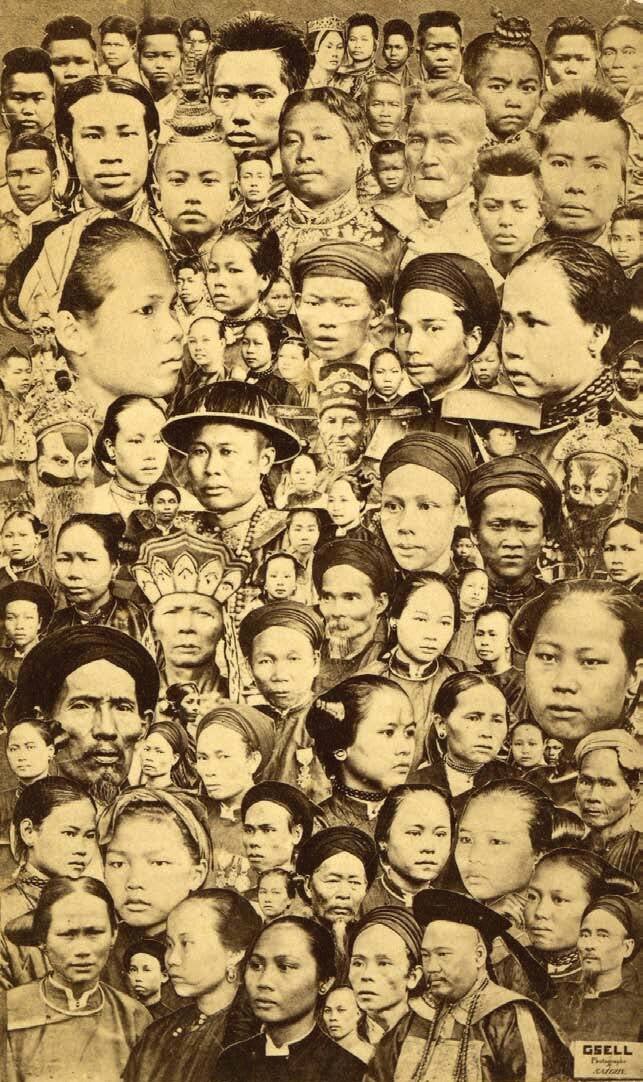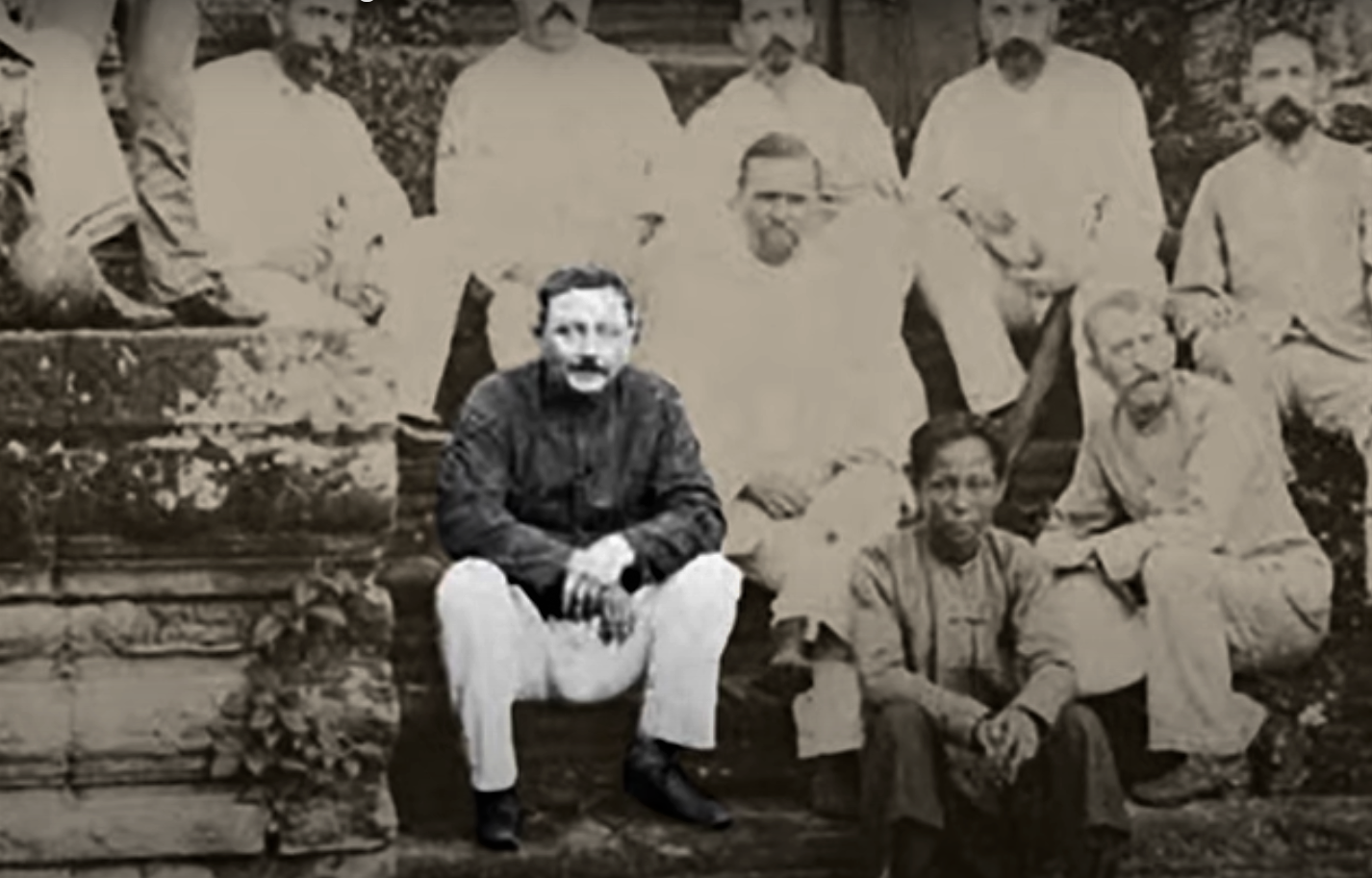Emile Gsell
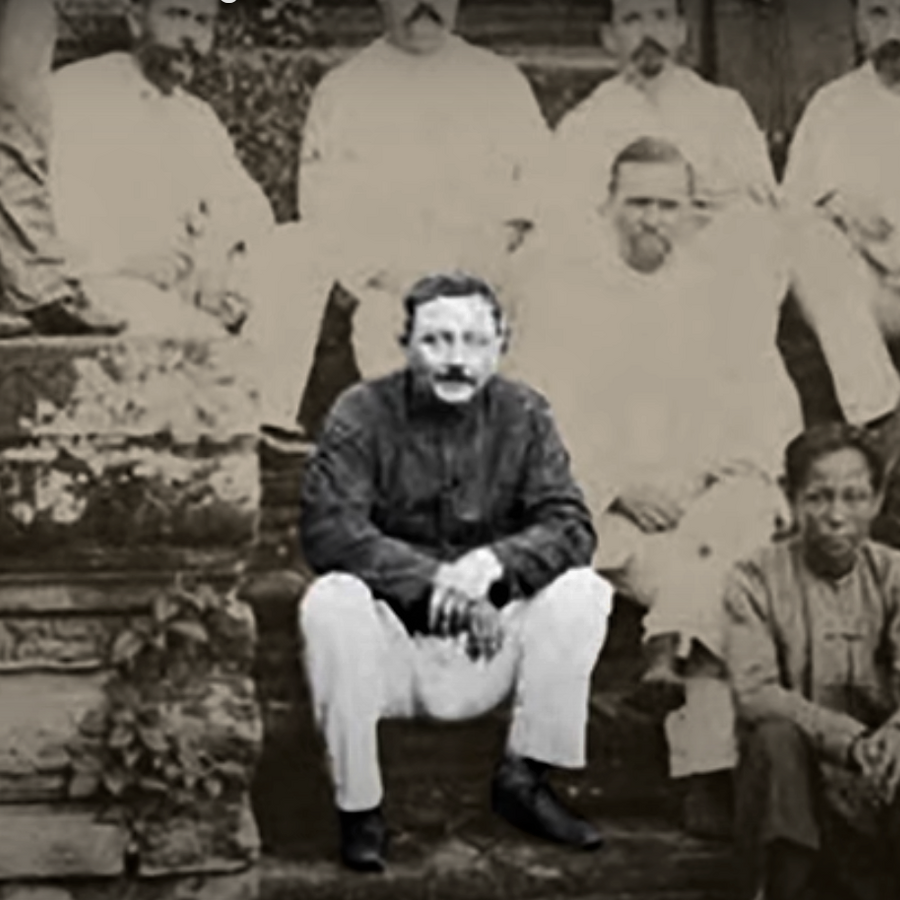
Émile Gsell (30 Dec 1838, Sainte-Marie-aux-Mines, Haut-Rhin, France — 16 Oct. 1879, Saigon (now Ho Chi Minh Ville,Vietnam) was a self-taught French photographer who produced among the earliest photographs of Angkor Wat when he joined the Mekong Exploration Expedition led by Ernest Doudart de Lagrée in May 1866 as a young Navy sailor.
Recommended for his photographic skills to other French explorers of Indochina, Gsell joined the Mekong Expedition on 8 May 1866, reaching Angkor where he stayed until 1st July. Back to Saigon, he left the army, becoming one of the first professional photographer in French Indochina, listed in the Annuaire de la Cochinchine 1867 as ‘Gsell Photographe, Rue Catinat’ [even if his studio was located on rue Rigault de Genouilly.
It seems that he took part in the 1871 diplomatic mission to Siam via Phnom Penh and Battambang led by French officer Charles Paul Brosssard de Corbigny in January and February 1871. In July that year, he accompanied the governor of Cochinchina Marie Jules Dupré in his visit to Angkor, the same way he had photographed the Angkor trip of Spanish ambassador to China and Annam Adolfo Paxtot y Achaval, who was the Spanish envoy to the Kingdom of Siam.
Less detailed and extensive than Scottish photographer John Thomson’s, his photographic work on Angkor met public acclaim after the minister of the Navy and commander of the French army in Cochinna Admiral Rigault de Genouilly presented an album of some fifteen of his Angkor photographs to Empress Eugénie in 1867. In her Travel Album of her 1883 – 4 journey to Phnom Penh and Angkor, American art collector and socialite Isabella Stewart Gardner pasted several photographs by Émile Gsell, and a price list of Angkor-related photos issued by Gsell Studio.
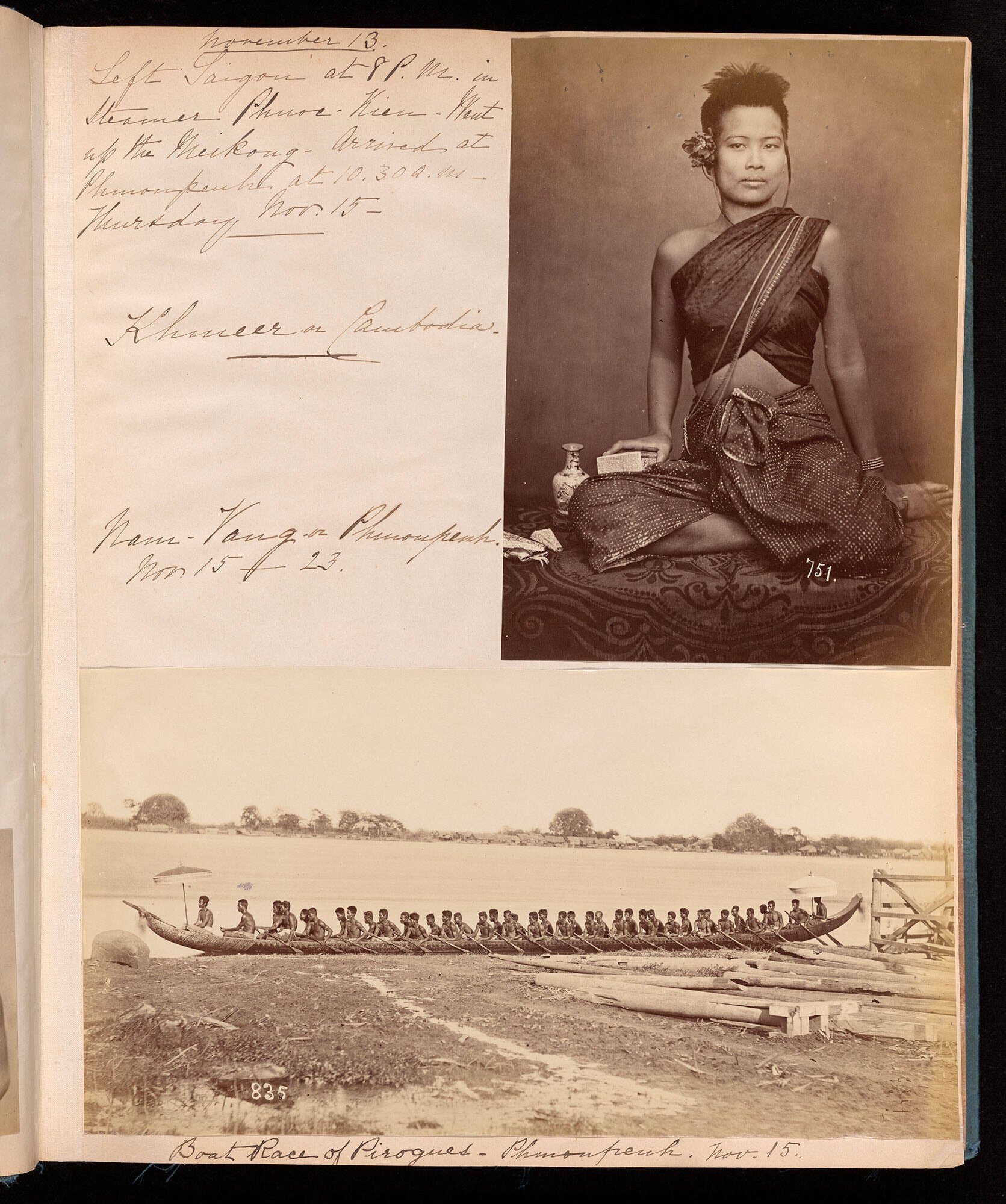
1) 2 photoprints by Gsell pasted on Isabella Stewart Gardner’s Cambodia Travel Album, 1883 – 1884, p 23. 2) At the end of the part on Cambodia, a price list from Emile Gsell Studio. [source: Isabella Stewart Gardner Museum, Online Documents].
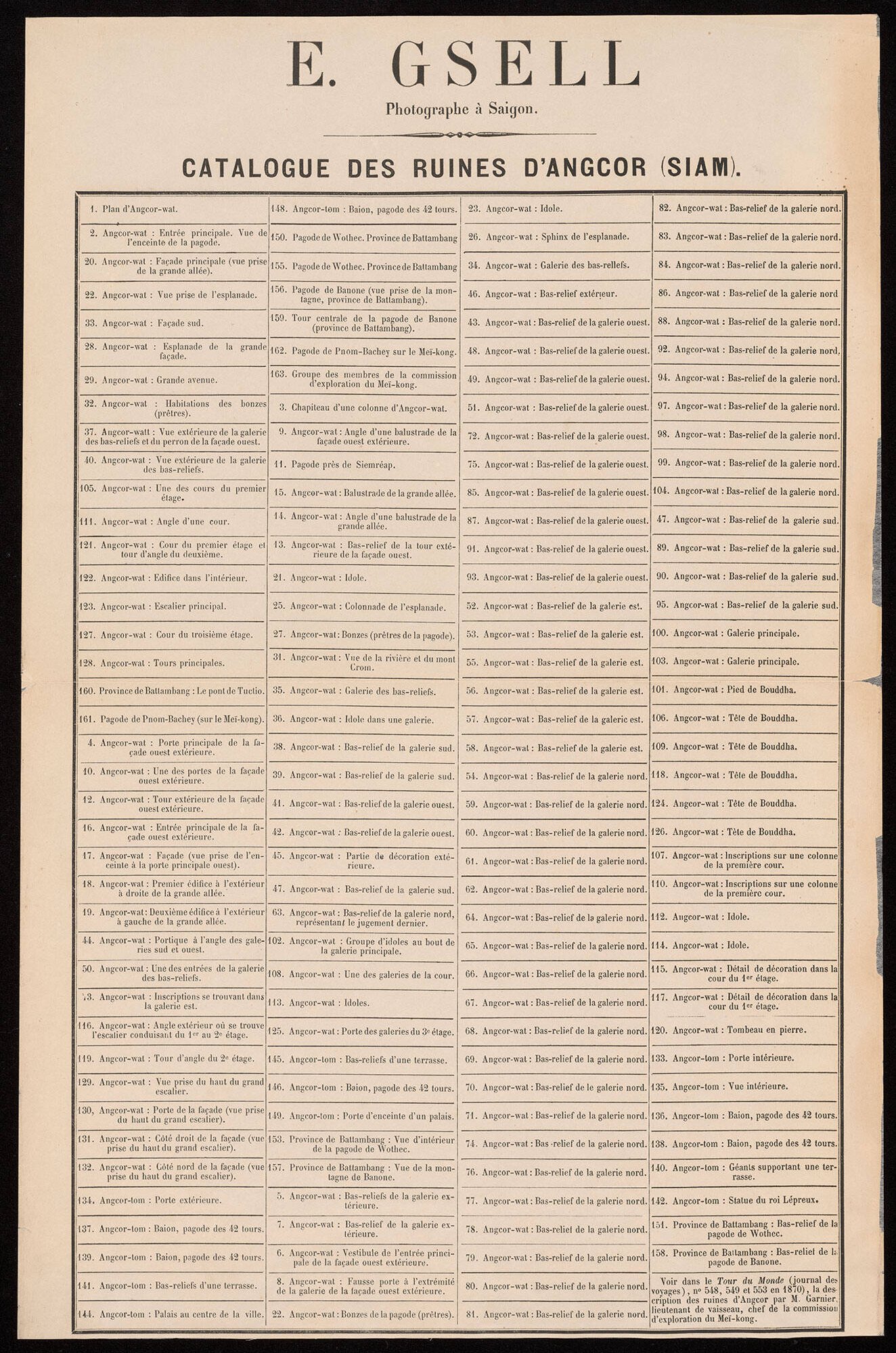
1) 2 photoprints by Gsell pasted on Isabella Stewart Gardner’s Cambodia Travel Album, 1883 – 1884, p 23. 2) At the end of the part on Cambodia, a price list from Emile Gsell Studio. [source: Isabella Stewart Gardner Museum, Online Documents].
1) 2 photoprints by Gsell pasted on Isabella Stewart Gardner’s Cambodia Travel Album, 1883 – 1884, p 23. 2) At the end of the part on Cambodia, a price list from Emile Gsell Studio. [source: Isabella Stewart Gardner Museum, Online Documents].
Louis Delaporte, who had been with Gsell in the 1866 Mekong Mission — indirectly criticizing him for only photographing Angkor Wat at the time -, noted in a letter to his parents dated Saigon, 2 July 1873: “Notre ancien photographe, qui y est retourné dernièrement, à ses frais né demande qu’à y revenir avec moi, et j’espère obtenir du gouverneur, l’autorisation de l’emmener.” [“Our former photographer, who recently returned there at his own expense, is only too happy to come back with me, and I hope to be granted permission from the governor to take him.”(see Julie Philippe 2015, op. cit, p 554) The official authorization never came, and it seems that after numbering 163 of his Angkor photographs in 1875, Gsell never went back to the Khmer temples.
Émile Gsell documented archaelogical sites, the Royal Court of Cambodia, dancers and musicians, and the daily life of Cambodian, Vietnamese and ethnic communities. In 1875 with Brossard de Corbigny’s mission to Hue, and in 1876 – 7 with the expedition on the Red River led by the French consul at Hanoi Alexandre Le Jumeau de Kergaradec (1841 – 1894), he was able to photograph life scenes of northern Vietnam. He was awarded a bronze medal at Paris 1878 Exposition Universelle, one year before his death. His photographs were marketed by Auguste Nicolier, who sold chemicals and photographic supplies in Saigon from 1876, and after his death by O. Wegener and Salin-Vidal.
A collage of portraits by Gsell used as business card by his studio, c. 1870 [source: Terry Bennett’s collection, in Terry Bennett, Early Photography in Vietnam, Folkestone, Renaissance Books, 2020, ISBN 978−1−912961−05−4, p 70.]
Nowadays, Emile Gsell’s work is seen as a major photographic source on the history of pre-colonial and early colonial Cambodia and Vietnam, in particular Saigon (Ho-Chi-Minh-Ville), along with the photographs by Pun Lun (1864 – 1900), Aurélien Pestel (1855 – 1897) and Võ An Ninh (1907 – 2009). Modern Vietnamese historians state that Emile Gsell was the first photograph ever to portray a woman in Tonkin (“Tonkin” being the Western rendition of 東京 Đông Kinh, ‘Eastern Capital’, the name of the capital city of the Lê dynasty (present-day Hanoi). In modern Vienam, Tonkin is known as miền Bắc, or Bắc Bộ (北部), ‘Northern Region’.)
As most of photographers of his time, Gsell never allowed his portrait to be taken. However, researcher Patrick Kersalé was able to identify Gsell in a group photography taken in front of Angkor Wat during the Doudart mission.

